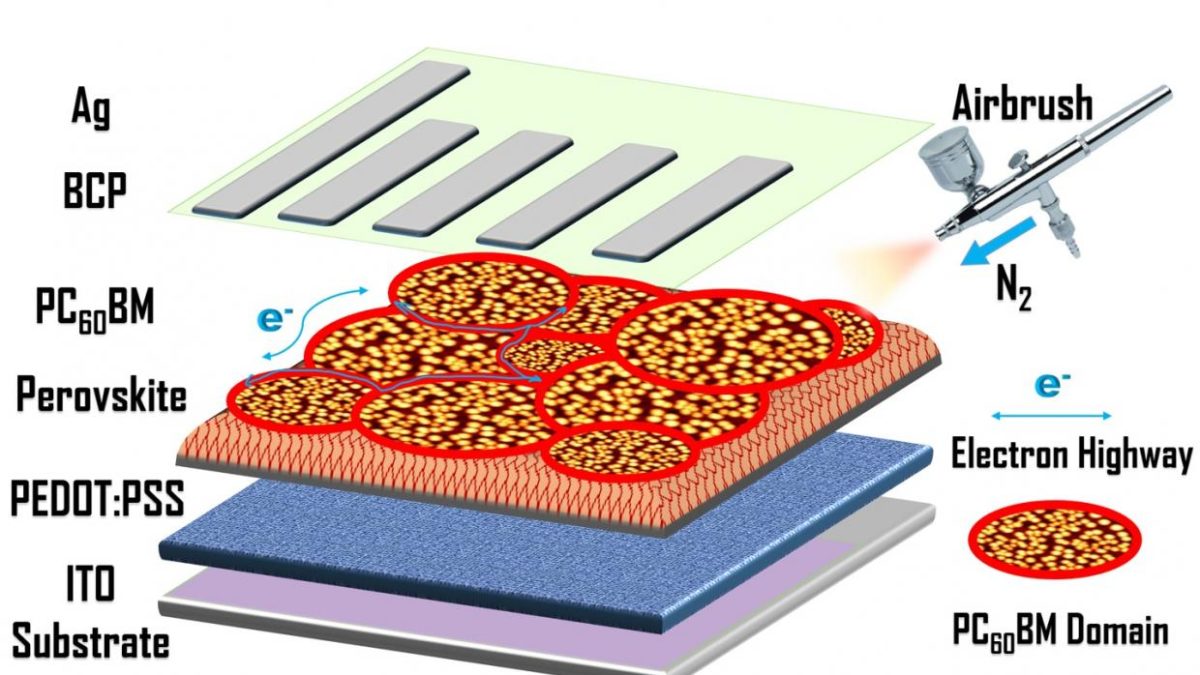A team of researchers from the universities of New York, Peking, Electronic Science and Technology of China, Yale and Johns Hopkins claim they have solved a major challenge to the commercial production of perovskite solar cells, by turning to spray coating. The scientists say spraying can apply the electron transport layer (ETL) uniformly across a large area, and is suitable for manufacturing large solar panels and ensuring even higher performance.
In an article published online ahead of Thursday's issue of Nanoscale – a publication of the Royal Society of Chemistry – the research team reported spray coating had led to a 30% efficiency gain over other ETLs – translating to a power conversion efficiency leap from 13% to over 17% – and resulted in fewer defects.
As commercial-scale fabrication has proved challenging, partly because it is difficult to effectively apply a uniform ETL layer over the crystalline surface of the perovskite, the researchers opted for the compound [6,6]-phenyl-C(61)-butyric acid methyl ester (PCBM) to ensure improved conductivity, less-penetrable interface contact and enhanced light trapping.
ETL options
Perovskites constitute the light-trapping intrinsic layer – the ‘i' in p-i-n – between the negatively charged ETL and a positively charged hole transport layer (HTL), and PCBM has a proven track record as an ETL material.
Popular content
“Very little research has been done on ETL options for the planar p-i-n design,” said Andre D. Taylor, an associate professor in the NYU Tandon School of Engineering’s Chemical and Biomolecular Engineering Department. “The key challenge in planar cells is, how do you actually assemble them in a way that doesn't destroy the adjacent layers?”
The most common method is spin casting, which involves spinning the cell and allowing centripetal force to disperse the ETL fluid over the perovskite substrate. However the technique is limited to small surfaces and results in an inconsistent layer that lowers the performance of the solar cell. Spin casting is also inappropriate for the commercial production of large panels involving methods such as as roll-to-roll manufacture, for which the flexible p-i-n planar perovskite architecture is otherwise well suited.
“Our approach is concise, highly reproducible and scalable,” said Prof. Taylor “It suggests that spray coating the PCBM ETL could have broad appeal [and go] toward improving the efficiency baseline of perovskite solar cells, and providing an ideal platform for record breaking p-i-n perovskite solar cells in the near future.”
This content is protected by copyright and may not be reused. If you want to cooperate with us and would like to reuse some of our content, please contact: editors@pv-magazine.com.



Nanoscale and other journals from the Royal Society of Chemistry are open access. This should be the norm, and access restrictions should be mentioned when researchers make the bad choice of publishing in paywalled journals like Elsevier’s Joule.